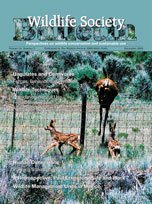Abandoned mines provide summer roosts, autumn swarming sites, and winter hibernacula for bats (Chiroptera). Although hibernacula selection has received considerable attention, few studies have examined the characteristics of mines used as summer roosts and autumn swarming sites. Abandoned mines are hazardous and often sealed to prevent human access. Alternatively, abandoned mines sometimes are gated to protect mine-roosting bats by deterring human entrance. However, gates and other mine entrance characteristics may affect bat presence and use. We examined the external characteristics of mines that could be measured safely and quickly to determine if they influenced bat species presence and relative frequency. We surveyed bats at 36 abandoned coal mine entrances during summer 2002 and 47 mine entrances (the same 36 as during summer and 11 additional mines) during autumn 2002 at New River Gorge National River and Gauley River National Recreation Area, West Virginia, USA. We captured 139 bats during summer and 1,733 bats during autumn of 9 different species. During autumn, more bat species used mines with isolated entrances than those with multiple entrances. Our results indicate that gates do not affect bats in terms of presence or frequency of use as much as mine entrance shape and proximity to other portals. Mine entrance size and shape positively influenced bat activity, particularly that of little brown myotis (Myotis lucifugus) and eastern pipistrelle (Pipistrellus subflavus), which were among the most commonly captured species. Spatial proximity of entrances should be considered in bat management decisions concerning abandoned mines.
BioOne.org will be down briefly for maintenance on 17 December 2024 between 18:00-22:00 Pacific Time US. We apologize for any inconvenience.
How to translate text using browser tools
1 December 2006
Are External Mine Entrance Characteristics Related to Bat Use?
JOSHUA B. JOHNSON,
PETRA BOHALL WOOD,
JOHN W. EDWARDS
ACCESS THE FULL ARTICLE
It is not available for individual sale.
This article is only available to subscribers.
It is not available for individual sale.
It is not available for individual sale.

Wildlife Society Bulletin
Vol. 34 • No. 5
December 2006
Vol. 34 • No. 5
December 2006
bats
Chiroptera
gating
mines
surveys
West Virginia




